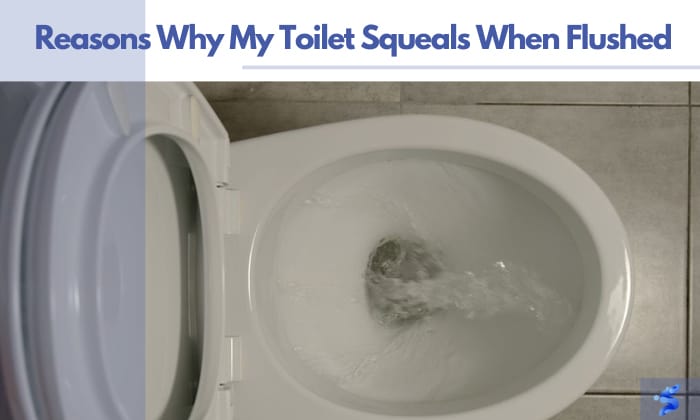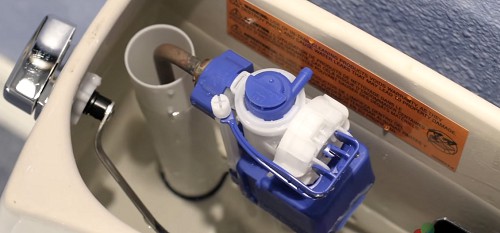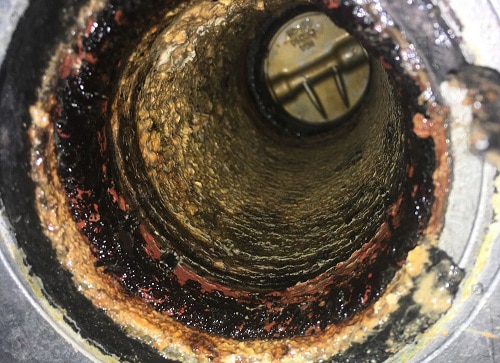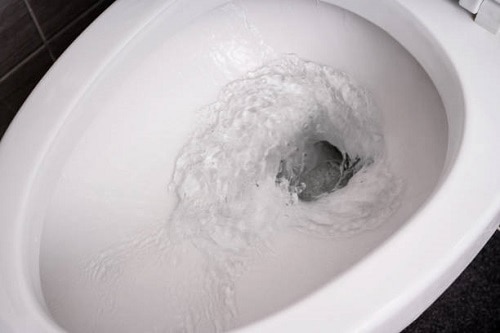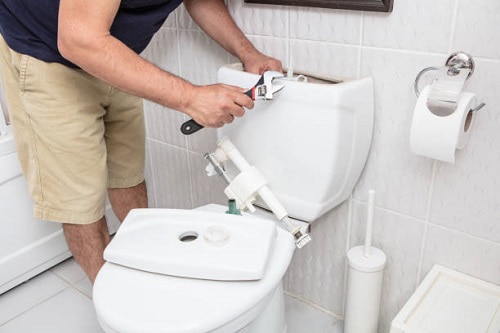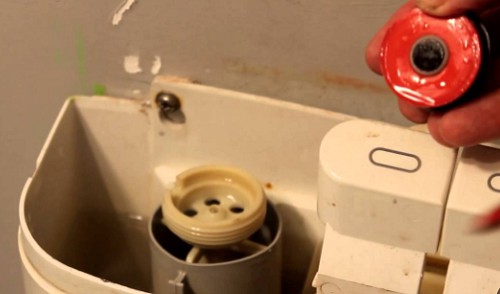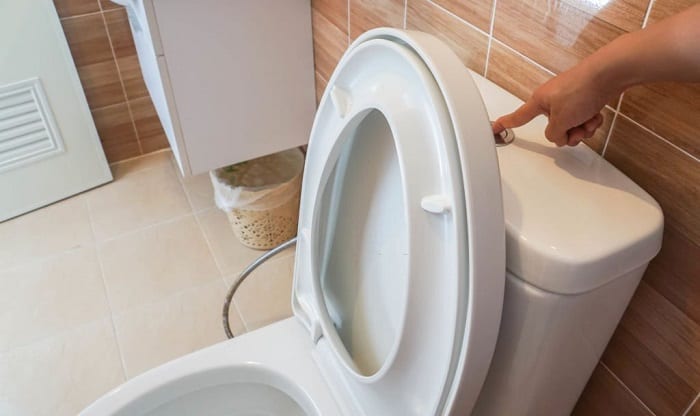“When I sit on it, my toilet is silent and reliable. But when not in use, strange noises emerge.”
If you’ve ever heard a high-pitched squealing sound after flushing your toilet, it can be annoying and very unsettling. You might search for help on the internet and ask for reasons why my toilet squeals when flushed, and yes, you have landed in the right place!
There are several potential causes of toilet squealing, from a dirty, broken fill valve to high water pressure, calcium buildup, or a faulty flapper. In this article, we’ll explore why your toilet may be making strange noises and provide tips and solutions so that you can enjoy a quiet and functional bathroom again.
Table of Contents
What Causes the Toilet to Squeal When Flushed?
When you’ve finished using the toilet and flush it, you may notice a high-pitched noise from the toilet after the water has completely filled the tank, which is brief and sounds like a hiss or thump. Toilet squeals after flushing can be caused by various reasons.
1. A faulty toilet fill valve
The most common reason for toilet whistling is a broken or dirty toilet fill valve inside the tank. The fill valve and float control the amount of water entering the toilet tank after flushing. The valve opens when the float drops and closes when the water reaches a predetermined level.
Lift the float arm to see if the noise or vibrations continue. If they do, the valve may not be the problem.
The fill valve can deteriorate with time or have a worn diaphragm gasket, causing your toilet to make noise. A faulty fill valve may also result in tank vibrations or failure to shut off, leading to toilet squealing.
How to solve
To fix the issue of the toilet making high pitched noise, simply adjust the float arm to a lower level inside the toilet tank. Lucky for you, this is quite an inexpensive and easy repair!
The type of float in your toilet determines how to make the adjustment: a cylinder float is attached to the fill valve body and has a clip you can adjust, while a float ball is attached to the rod’s end and has a screw.
If the noise stops after you squeeze or turn these parts, then you’re all set. However, it’s recommended to get a new fill valve assembly if manual adjustment does not work.
If you’re not sure how to replace it yourself, it’s best to leave it to the professionals. They might as well give useful advice and solutions when your toilet makes a whistling sound.
2. Calcium buildup inside the pipes
In addition to slowing down toilet flushing, calcium deposits can also cause a high-pitched squealing sound in your toilet. These deposits can clog pipes, preventing the flow of water and leading to strange noises.
A calcium buildup is probable if you hear a squealing sound as your toilet tank is filling and nothing during other times. If you see white stains around the toilet’s outer fittings, your residential water contains hard minerals that can cause this problem.
How to solve
To remove calcium deposits from your water supply pipes, you can clean your toilet with vinegar and hire a certified plumber who can analyze the degree of the problem and remove the buildup using specialist cleaning techniques like hydro jetting and chemical treatment.
3. High water pressure
If your toilet squeal when filling, the water pressure may be the culprit. Toilets use a lot of water, and there may be squealing sounds when liquids flow through pipes or vibrations as the water comes into contact with a loose section of pipe.
Water pressure in the home should be between 40 and 80 PSI, as this range will protect the integrity of your plumbing system against force-related damage.
How to solve
To address this issue, which causes your toilet makes whining noise, you can install a pressure regulator to control the water pressure in your house.
Additionally, to modify the water flow, you can use the adjustment screw found on the water supply valve.
4. Faulty flapper
One reason you might be hearing a loud noise when flushing upstairs toilet in your house is because of a faulty or worn-out flapper. The flapper is like a gatekeeper that separates the water in the toilet tank from the water in the bowl.
If it’s not sealed properly or is worn out, water can leak into the bowl when it’s not supposed to, causing you to hear noises from your toilet.
It is wise to check not only the flapper, as there can be issues with the chain or spring holding this component. And if left unaddressed, the issue could lead to a higher water bill, so be aware of this as well!
How to solve
To address the issue when the toilet makes noise after flushing, ensure that the toilet flapper functions appropriately, and you should have it replaced once it shows signs of being worn out or damaged.
5. Faulty or dirty ballcock washers
Washers that are dirty due to scale buildup or worn out can block the water flow to the toilet, leading to squealing sounds when you use it.
How to solve
Remove the washers and clean them. If there’s damage to these components, you can replace them for less than five dollars.
Common Toilet Sounds After Flushing
Toilets can make a variety of sounds after flushing, and while some are harmless, others may indicate underlying issues.
1. Gurgling sounds
This type of sound can be difficult to identify, since it could be trivial. Though not like a whistling toilet dangerous, it may signal obstruction in the sewer drain, vent stack, or toilet.
It is critical to avoid trying difficult repairs on your own; instead, you should seek the expertise of a professional plumber to properly solve any piping obstructions.
Remember that keeping your toilet in good working order might save you from future difficulties and pricey repairs.
2. Knocking or rushing water sounds
This happens when water flows swiftly through the pipes but then abruptly stops, smashing against the sidewalls or fittings.
Although this is not a major issue, it can cause pipe damage over time if the water pressure is too high. You can adjust the shut-off valve to restrict water flow to the toilet and use a pressure regulator to prevent problems stemming from this occurrence.
3. Hissing or whistling sounds
Toilet whistles when flushed can often be triggered by a failing flapper, a problematic overflow tube, or a fill valve and ballcock that need adjustment.
Tips to Prevent Toilet Noise
Preventing toilet making loud noise is easier than you might think, and it starts with regular maintenance.
- Regularly check the toilet’s internal mechanism and tighten the loose parts. Don’t forget to replace worn-out parts promptly.
- Blockages are a common culprit, so check for them regularly and remove any blockage you find.
- Using the toilet properly is another essential step in noise prevention; avoid flushing items like sanitary napkins, paper towels, baby wipes, and cigarette butts down the drain, as they can cause troublesome clogs.
- If you’re dealing with your toilet squealing randomly or nonstop, don’t hesitate to call a professional plumber. Trying to fix the toilet on your own can be frustrating and might even worsen the issue.
Conclusion
It might be a bit frustrating when something as simple as a toilet can be so noisy, but don’t worry – we’ve got you covered!
It’s important to take action to identify the “reasons why my toilet squeals when flushed” and address the underlying issue. Ignoring the problem could lead to more serious plumbing disasters down the line, not to mention the ongoing annoyance of a noisy bathroom.
By following the tips and solutions we’ve provided, you can keep toilet noise in check and enjoy a smoothly running bathroom.

I’m Paulk Webb, and I work as a writer for Saveourwaterrebates. I’m happy to put in the time and effort to conduct market research to identify the most pressing issues faced by households concerning their plumbing. Feel free to check out our guides to get the most informed recommendations for how to solve your problems.


